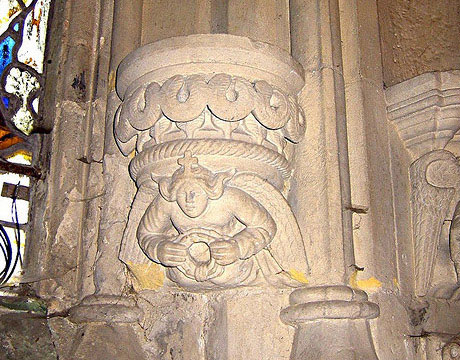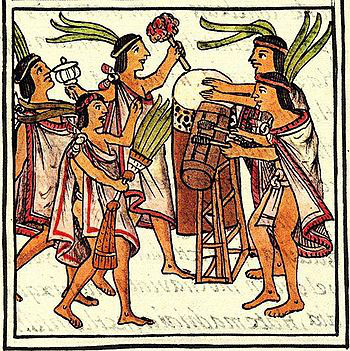The Glorious History of the Krewe of Spank
In the year 2013, the Krewe of sPANk made its public debut on the streets of New Orleans as the newest sub-krewe of the most illustrious and unabashedly outlandish Krewe du Vieux. To many this was their first exposure to the Krewe. But any knowledgeable observer knows the Krewe of Spank has had a long and colorful history, but one shrouded in myth and legend.
The factors that make delineating a clear history of the Krewe difficult are many, the remarkable secrecy of the Krewe, being one. Membership was held to such secrecy that some did not even know that they were members. Likewise, the history and lineage for much of the organizations existence remained unrecorded. In addition much of the information known to the public is often false, perpetuated down the ages by a cadre of jealous outsiders, close talkers with bad attitudes and even worse breath.
But now after their public debut, the true history of Spank, as best as it can be reconstructed from the oral traditions, artifacts and rare texts found in obscure volumes of quaint and curious lore, can now be reveled.
The first established appearance of the Krewe was documented in a panel unearthed in Ur dated to the 2700 BC. And often mistaken for a royal standard the depiction is the first record of the Krewe the parading through the streets of Ur satirizing the Sumerian Royal Court. Evidence indicates the Krewe remained in the Sumerian city for much of its early history. With the decline of the city in the 3rd Dynasty, the Krewe began a migration which eventually led to Egypt.

Ur c. 2700: The so called “Royal Standard” depicts a parade by the Krewe of SPANK through the streets of Ur. What has been misidentified as a depiction of a defeated enemy brought before the king is clearly the honoring of the parade royalty with gifts.
Evidence shows the Krewe had established itself and paraded during the 19th Egyptian dynasty in the city of Thebes, c. 1200 BCE. While inscriptions indicate Royal sanction, the actual connection to the Egyptian court remains hazy. However it has been generally accepted that at least one Pharaoh, possibly Seti II, was a member, but the evidence is inconclusive.

Thebes c. 1200 BC: Regulations for the streets of Thebes banned the use of wheels so floats were carried.
In the 6th Century BCE, the Krewe again relocated, this time to Athens, Greece. They had been drawn by the Great Dionysia, the newly established urban version of the rural festival celebrating the Athenians acceptance of the cult of Dionysus. Noted for a procession lead by great phalluses, the festivities were a natural fit with the Krewe.
The activities of the Krewe during the Roman period remains unclear, as they seemed to have been absorbed into, or become associated with a small cult associated with Pan, god of the wild and nature. But this was an important event as the association would persist for much of the history. Bacchus being a more obvious choice, despite being a far inferior version of the Greek god Dionysus, historians can only speculate as to the motivations for the Pan association.
It is believed that in the latter days of the empire, the Krewe migrated north possibly into Roman Gaul, but possibly as far as the British Isles. But by the Saxon period the Krewe was known have established itself in the British Isles, participating in the Saxon “Lencten” (meaning the spring season) festivals marking the end of winter, which are the origin of modern carnival celebrations. It was at this point when the wearing of leggings became common in daily life, however it is known the Krewe firmly rejected these “pants” as they would come to be called and preferring to parade in the “old way”, that is pantsless.
The Krewe remained in England for several centuries, no doubt due to the superiority of English beer to those found on the continent at this time. In fact, historians now acknowledge that members of the house of Wessex, beginning under the reign of Alfred the Great, had participated as honorary parade Kings and members of the Krewe. Legend hold that Æthelred the Unready gained his notorious title not for his poor showing against the Viking hordes, but from his failing to address tasks and cajoling Krewe members into completing them at the last minute.
This relationship would last until 1066 and the coming of the future King, Harold, who had been admitted as member and rose to the rank of captain. But the Krewe grew tired of Harold’s halitosis and insistence of imposing his lackluster ideas for parade themes when better and more satirical themes had been preferred by the Krewe. His instance on taking up leggings or “pants” whilst parading was another noted area of friction. When he assumed the throne, his dismissive attitude sealed their support for rival Duke William, known to history as William the Conqueror. However, Krewe lore holds that Harold’s queen, Edith, was most pleasant of company.

Bayeux Tapestry, Scene 1: Here the halitosis afflicted King Harold disparages the noble efforts of the Krewe. Often misinterpreted as “swearing” on holy relics, Krewe of Spank history confirms the only swearing was expletives offer by the Krewe members at the disagreeable Harold.
The move proved a good one for the Krewe, and the next centuries form an important period. Still a shadowy and secret organization, it was able to incorporate itself in both English and French life. This period saw the beginnings of an established Carnival season and an expansion in the reach of the Krewe with the coming of the Knights Templar and the Crusades. Good relations with the Knights Templar’s gave it access to a vast trading empire, opening new avenues for unique throws and parade themes. Records indicate the Krewe was known to have used Templar buildings as dens given the circular designs aided in float construction, but their antics were believed to have been depicted in carvings and manuscripts.

Chartres Cathedral c. 1200 AD: Carving is believed to depict the Krewe of SPANK preparing a float for Carnival festivities.
With the dissolution of the Templars, lead by the complete asshole Philip IV of France who made charges of heresy, idolatry and anything else he could think of (the famous Baphomet head being nothing more than an old float decoration) SPANK followed the Templar’s exile to the far reaches of the known world. Based for a time to Scotland, several carvings in Rosslyn Chapel depict the Krewe participating in festivities. At some point he Krewe finally relocated to the new world with the now lost colonies of the Knights Templar in the Americas.

Rosslyn Chapel c. 1450: Carving depicts a Krewe of Spanque member masking as Drew Brees preparing a throw.
When the colonial powers came to the new world they found the Krewe firmly established and already maintaining a strong carnival tradition. Spanish documents record numerous SPANK traditions, often misinterpreted as Aztec religious rites (noted for their lack of pants). When the French established a foothold in the New World, the Krewe quickly re-located itself to Bienville’s newly founded city, New Orleans. There it found its true home and the cultural compatriots of the spirit of SPANK.

Illustration from the Florentine Codex c. 1550. Illustration depicts the band accompanying the Krewe of SPANK playing a Teponaztli drum.
It was in 2012, of these later days, under hurricane season’s yearly threat of complete obliteration, that Krewe of SPANK finally deemed the time right and good for revealing itself to the public. A petition for was made and accepted by the most illustrious and unabashedly outlandish Krewe du Vieux, and Spank began the next chapter in its long and storied history.
